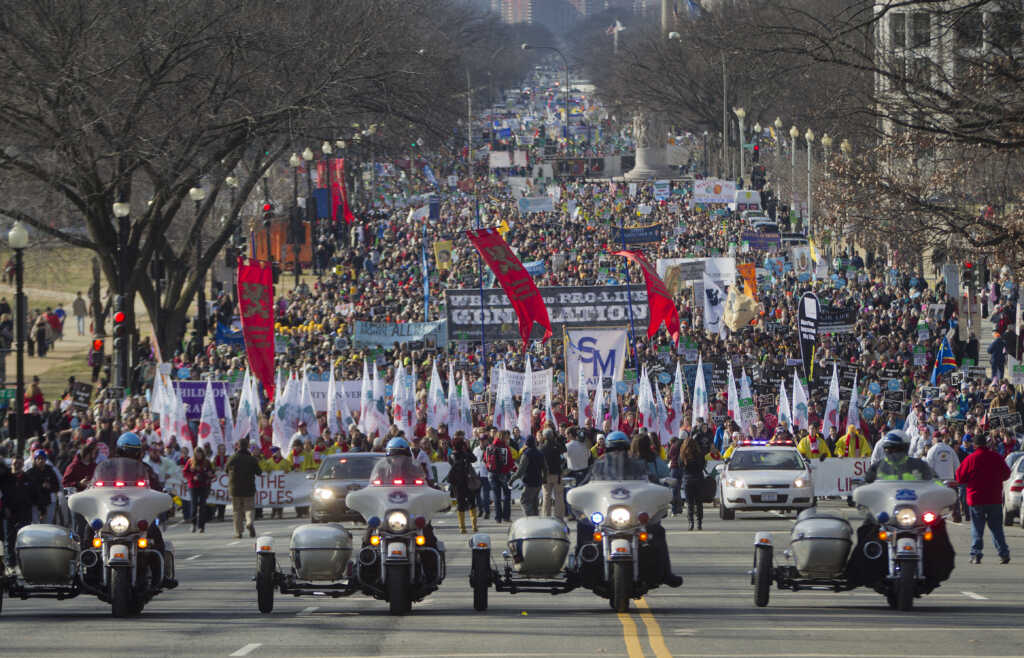Tens of thousands of pro-life citizens are set to take to the streets in Washington, D.C., Friday for the March For Life, an annual event that will take on new meaning seven months after the U.S. Supreme Court overturned Roe v. Wade and transformed U.S. abortion law.
This Year’s Theme
This year’s theme — “Marching into a Post-Roe America” — embraces the pivoted position the pro-life movement finds itself in, as the battle largely shifts from federal regulations to the states. For activists seeking to reframe the abortion debate in America, the high court decision has certainly been a victory.
CBN News will be broadcasting live from the 2023 March For Life, speaking with countless men and women who will brave the elements and participate in defense of the born.
Each year, the march is a peaceful demonstration aimed at visually showing that the 1973 Roe v. Wade Supreme Court case legalizing abortion across the U.S. did anything but solve or dismiss the moral dilemmas surrounding abortion.
With Roe in the rearview mirror this year, the event will exude a new tone — one that carries a profoundly important responsibility for those behind the march.
“This will be the 50th annual March for Life, the first Post-Roe National March,” a March for Life statement read. “We plan to celebrate, give thanks, and remember those who have gone before us who led the way to this historic moment in time, and to map out a path forward!”
The History
As the March For Life prepares to look toward the future, it’s essential to explore the event’s roots. The first March For Life unfolded in 1974 in the wake of the Roe decision, but the annual event has only grown and intensified over the years.
Listen to the latest episode of CBN’s Quick Start podcast 👇
Last year, Jeanne Mancini, president of the March for Life, took Faithwire through the intriguing history and explained that the effort was founded by the late Nellie Gray.
“She was an attorney who worked for the government. She was in her late 40s when she founded the March,” Mancini explained. “A few months before the first march … about a dozen people gathered in her townhouse on Capitol Hill and discussed the anniversary of Roe coming up.”
The group discussed how to counter the day and brainstormed ways to push back on the abortion front.
“They didn’t want that terrible anniversary to go unnoticed or unpassed without standing up for the unborn, and so they decided, ‘Let’s do a march,'” Mancini said.
The resulting event, held Jan. 22, 1974, attracted thousands of participants who rallied, marched around the U.S. Capitol, and lobbied members of Congress.
What’s perhaps most interesting is that the group initially assumed the March For Life would be a one or two-time event. They based this speculation on their belief that Roe was an inappropriate legal ruling that stretched beyond what the Supreme Court was called to do.
Thus, they didn’t believe it would stand for long.
“They thought it would go after a year or two, and so they planned this one or two-time event,” she said. “And were shocked.”
But once it was clear the law wasn’t changing, Gray decided to make the march an annual happening — pledging to hold the event until Roe v. Wade would one day be overturned. Now, that day has come, though the March For Life has no plans to disband.
Going Strong 50 Years Later
Friday marks the 50th march, fulfilling the legacy set long ago in Gray’s Washington townhome. What was once assumed to be a short-term response has continued to grow into a transformational force.
“As the event continued, it grew and grew … and became younger in demographics,” Mancini explained.
She noted her belief that some in the pro-choice movement initially underestimated the impact of the March For Life, and assumed people would simply become desensitized to abortion and would essentially move on from it.
“It would become normal and we would just go away,” she said of pro-choicers’ assumptions about the pro-life movement. “We’d stop marching. But the opposite happened … more and more people come to the march every year.”
Mancini believes the March For Life has always sent a compelling visual message to fellow citizens and leaders, especially as the procession, until last year, ended at the Supreme Court.
“I can’t think of a more powerful visual statement that Roe has not settled law than hundreds of thousands of marchers [who] are going before the Supreme Court,” she said.
But after the Supreme Court’s Dobbs v. Jackson Women’s Health Organization decision dismantled Roe, the march will conclude between the U.S. Capitol and the Supreme Court, a symbolic decision positioning the crowd between the two governmental branches.
Read more about the history of the March For Life here, and be sure to watch CBN News’ live coverage of the March For Life this Friday. Faithwire senior writers Billy Hallowell and Tré Goins-Phillips will be in Washington, D.C., to capture important moments from the massive event.
***As the number of voices facing big-tech censorship continues to grow, please sign up for Faithwire’s daily newsletter and download the CBN News app, developed by our parent company, to stay up-to-date with the latest news from a distinctly Christian perspective.***



